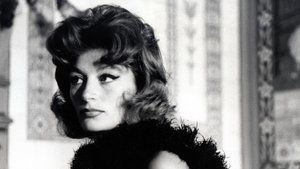Contact: [email protected]
Video Sources 0 Views

Synopsis
[ez-toc]




Introduction
In the ever-evolving world of cinema, the preservation and revitalization of old movies have become a delicate yet crucial endeavor. One such project that has recently stirred the cinematic pot is “Lola Colorized 1961.” In an era dominated by cutting-edge visuals and high-tech cinematography, the decision to colorize an old gem raises eyebrows. This article aims to delve into the journey of Lola Colorized 1961, exploring its roots in the black and white original, the significance of preserving old movies, and the artistic challenges and controversies surrounding the colorization process.
Read Media File Transfer Agreement: Terms and Conditions
Read FAQ
The Journey of Lola Colorized 1961: From Black and White to Color
The year 1961 witnessed the birth of a cinematic masterpiece, “Lola Colorized,” directed by the visionary Jacques Demy. The film starred the iconic Anouk Aimée and was produced by Georges de Beauregard. As a crucial piece of French New Wave cinema, “Lola Colorized” captivated audiences with its compelling narrative set against the enchanting backdrop of Marseille. The influence of Max Ophüls on Demy’s visual style is palpable, making “Lola” a timeless classic.
Fast forward to the 21st century, and the ambitious decision to colorize “Lola Colorized” came to fruition. The driving force behind this endeavor was a collaboration between Rome-Paris Films and Euro International Films, with the influential Carlo Ponti at the helm. The goal was not to erase the authenticity of the original but to breathe new life into it through the lens of color.
Anouk Aimée’s portrayal of Lola Colorized, the enigmatic cabaret dancer, remains the heartbeat of the film. Her performance, now in vivid color, adds layers of depth to the character, elevating the viewing experience. The colorization process, overseen by modern technology, brought challenges, but the end result was a visual feast that paid homage to Demy’s original vision.
The Significance of Lola Colorized 1961 in the Context of Old Movies and French New Wave Cinema
As a film reviewer, delving into colorized movies often sparks debates within the cinematic community. The addition of color to old films can be seen as sacrilege by purists, but it also serves as a gateway for new audiences to connect with classics like “Lola Colorized.” The role of film reviewers in navigating this delicate terrain is crucial, as they dissect the impact of colorization on the narrative, characters, and overall cinematic experience.
“Lola Colorized 1961” is not just a revamped version of a classic; it’s a testament to the evolution of filmmaking. The debate over preserving films in their original black and white format versus embracing the possibilities of colorization is central to understanding the changing landscape of cinema. Some argue that the vibrant hues distract from the purity of the original, while others see it as a refreshing take that can rekindle interest in old movies.
French New Wave cinema, known for its avant-garde storytelling and unconventional techniques, is both an influencer and influenced in the context of Lola Colorized 1961. The film’s innovative aspects align with the movement’s spirit, pushing boundaries while paying homage to its roots. As we analyze the impact of colorization on Lola, we must also consider its role in preserving the essence of French New Wave cinema for future generations.
Preserving Cinematic History: Balancing Restoration with Modernization
Marseille, the picturesque setting of the original “Lola,” plays a vital role in the film’s narrative. The decision to colorize raises questions about whether this transformation enhances or alters the representation of this iconic location. Does the introduction of color breathe new life into the streets of Marseille, or does it risk diluting the authenticity of Demy’s vision?
In the pursuit of preserving cinematic history, various techniques beyond colorization are employed to bring old movies to modern audiences. Remastering and sound enhancement are delicate processes that aim to retain the integrity of the original while ensuring a more immersive experience for contemporary viewers. The challenge lies in striking a balance between restoration and modernization, providing audiences with an authentic yet enhanced encounter with cinematic treasures.
The Controversy Surrounding Colorization: Debunking Myths and Considering Artistic Integrity
The controversy surrounding the colorization of old movies is a long-standing one. Purists argue that the addition of color disrupts the directorial intent and compromises the aesthetic authenticity of the original. However, modern colorization techniques have evolved significantly, utilizing advanced technology to stay true to the artist’s vision.
Addressing common criticisms involves acknowledging the legitimacy of concerns while dispelling myths surrounding colorized films. The goal is not to replace the black and white classics but to offer an alternative experience. By understanding and appreciating the advancements in colorization technology, viewers can engage with old movies in a new light without compromising the artistic integrity of the original.
Embracing the Old and the New: The Future of Colorized Movies
As we stand at the crossroads of cinematic history, the future of colorized movies is a topic ripe for discussion. “Lola Colorized 1961” serves as a beacon, inviting audiences to appreciate both the timeless beauty of black and white aesthetics and the creative possibilities offered by colorization.
In conclusion, the ultimate goal should be to provide viewers with options. The choice between watching a film in its original black and white glory or in a revitalized colorized version lies with the audience. Lola Colorized 1961, with its rich history, stellar cast, and ambitious colorization process, stands as a testament to the delicate dance between preserving the old and embracing the new in the ever-evolving world of cinema.
As film reviewers, it is our responsibility to guide audiences through this nuanced journey, encouraging them to appreciate the artistry of both eras. “Lola Colorized 1961” is not just a movie; it’s a conversation starter, a bridge between generations, and a celebration of the timeless magic of cinema. Let’s embrace the old and the new, allowing each frame to tell a story that transcends time and technology.











